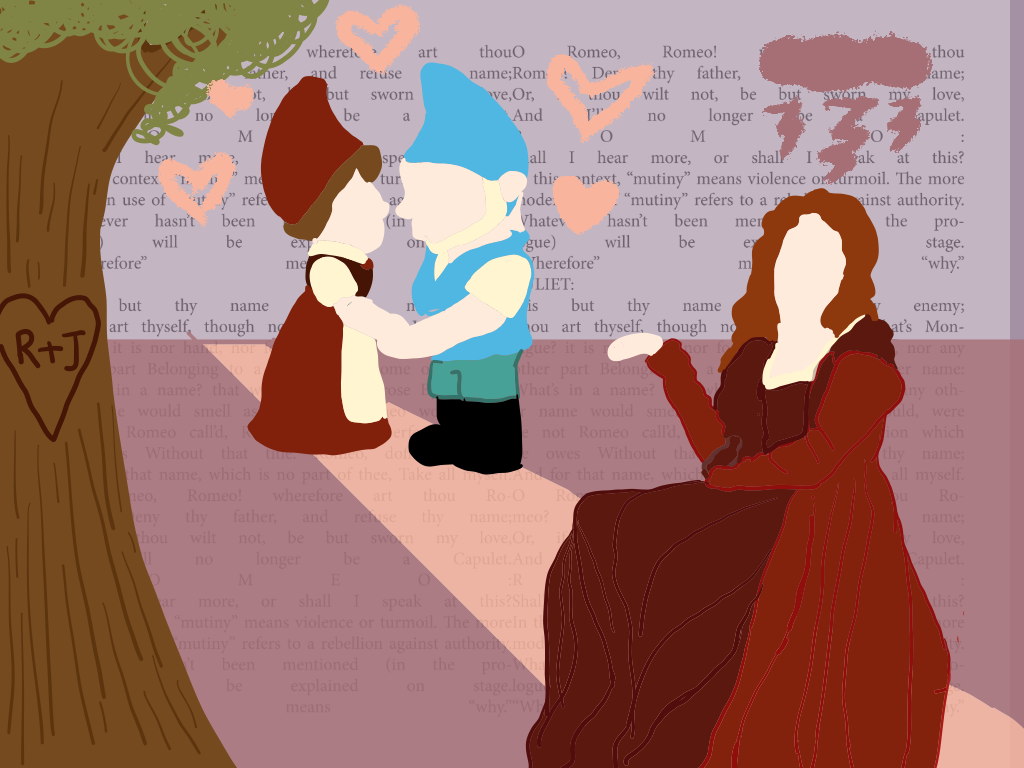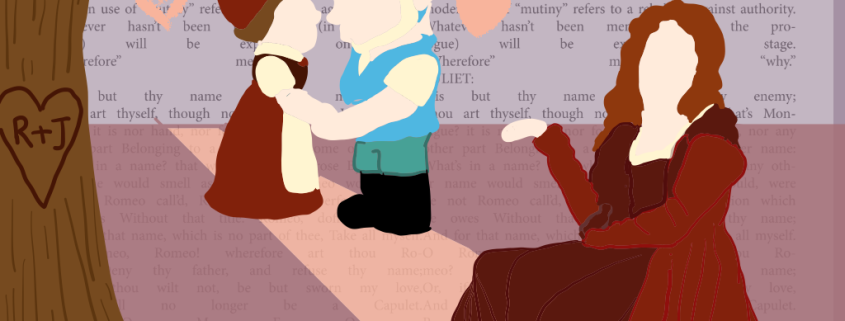Shakespeare’s legacy lives on in adaptations

Over Fall break, I watched the latest iteration of the Shakespeare classic “Romeo and Juliet:” “Rosaline.” The live-action film, starring Kaitlyn Dever as the titular character, provides another angle to the “Romeo and Juliet” story, telling the story again through the eyes of Rosaline, Romeo’s ex.
In this adaptation, many of the events of the original Shakespeare version are the same (would it be “Romeo and Juliet” otherwise?). Romeo (Kyle Allen) and Juliet (Isabela Merced) fall in love at first sight, but they’re from opposing families. In this version, the two must fake their deaths — in a comedic manner, as befits a film in the comedy genre. What the film provides is a new sense of the classic; instead of the original tragedy, the only tragedy here is that once he meets Juliet, Romeo ditches Rosaline without giving her a second thought.
“Rosaline” has been labeled a “feminist” film by outlets such as Variety, which makes sense given that the whole storyline is Rosaline attempting to win her love back in a patriarchal society where she’s treated like property to be married off. Rosaline strives to be the main character of her own romance, which is an admirable desire: a character motivation that awakens themes of gender inequality.
In this reimagining, Romeo is ignorant and unintelligent, paling in comparison to Rosaline’s new suitor, Dario (Sean Teale), who assists Rosaline on her journey. Dario is Rosaline’s love interest, but he’s not one of the focuses of the tale, the way Romeo was in Juliet’s. The title of the film is “Rosaline,” not “Rosaline and Dario.”
While I have some qualms about the way the whole concept of “Rosaline” is executed — mostly that everything happens too quickly — I still appreciate the way the film is able to provide yet another new angle by which to view “Romeo and Juliet.” The humor in this reimagining is palpable, especially in poking fun at the characters’ shortcomings and straying away from the centering of the two “main” characters.
Reimaginings don’t necessarily have to tell the story from a whole new character’s point of view to have merit, though. It can just be from a new perspective. One example I think about is “Gnomeo and Juliet,” the 2011 animated film directed by Kelly Asbury.
In “Gnomeo and Juliet,” Romeo, renamed Gnomeo, reflects on the fact that both he and Juliet are garden gnomes. Voiced by James McAvoy and Emily Blunt, respectively, Gnomeo and Juliet are star-crossed gnome lovers, each living in yards on different sides of the fence. The gnomes’ relationships mirror the enmity of their human neighbors, Mr. Capulet (Richard Wilson) and Mrs. Montague (Julie Walters) — Juliet is part of the red-hat gnomes on Mr. Capulet’s side, while Gnomeo is part of the blue-hat gnomes on Mrs. Montague’s side.
Other than the transplantation of Shakespeare’s “Romeo and Juliet” into the lives of modern-day garden gnomes, “Gnomeo and Juliet” is uniquely suited for the animated medium due to its use of everyday objects. The original Shakespeare tale is set in Verona, Italy, during the Renaissance period, which is a beautiful location but might feel inaccessible to viewers. Having the tale set in everyday backyards makes it more fun. The story is also perhaps more engaging because audiences may be more familiar with the tale’s setting and objects, especially since we may wonder what our inanimate objects are doing when we’re not there.
Shakespeare’s statue even comes to life and speaks to Gnomeo in the film about the parallels between Gnomeo’s story and his play of “Romeo and Juliet,” which I suppose is a very meta moment that pays homage to the source material. All in all, “Gnomeo and Juliet” is a memorable work because it makes full use of animation’s freedoms and artistic capabilities to reinvent the original Shakespeare tale.
Similar to “Rosaline,” “Gnomeo and Juliet” translates what was originally a tragic tale into a comedy. The difference is that while the former is live-action, the latter is an animated film. I think, though, that both have a lot in common with one another in the fact that they draw reference material from Shakespeare and use that inspiration for the details of their own stories.
If reading Shakespeare was difficult for you just like it was for me in high school, maybe try one of these films. They’re digestible, innovative in a modern sense and, I know for me personally, distract me from the often “tragic” happenings of my own life.
Valerie Wu is a senior writing about animation and digital arts from a contemporary perspective. Her column “Animated” runs every other Tuesday.

